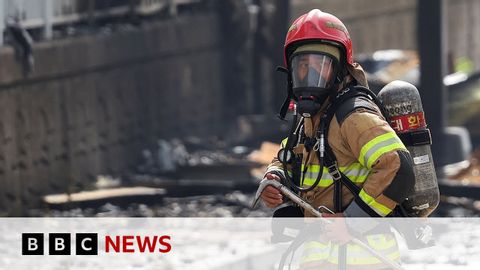バッテリー爆発で韓国工場火災|BBCニュース (Exploding batteries spark deadly South Korea factory fire | BBC News)
VoiceTube が 2024 年 06 月 25 日 に投稿  この条件に一致する単語はありません
この条件に一致する単語はありませんUS /ˈtrɪɡɚ/
・
UK /'trɪɡə(r)/
- n.引き金;事を開始する装置;きっかけ;トラウマの引き金;トリガー (電子工学);トリガー (コンピュータ);トリガー (釣り)
- v.t.引き起こす;引き起こす;反射を引き起こす
US /ɪˈmidiɪtli/
・
UK /ɪˈmi:diətli/
- adj.やりにくい;扱いにくい : 油断ならない;正直ではない
エネルギーを使用
すべての単語を解除
発音・解説・フィルター機能を解除
